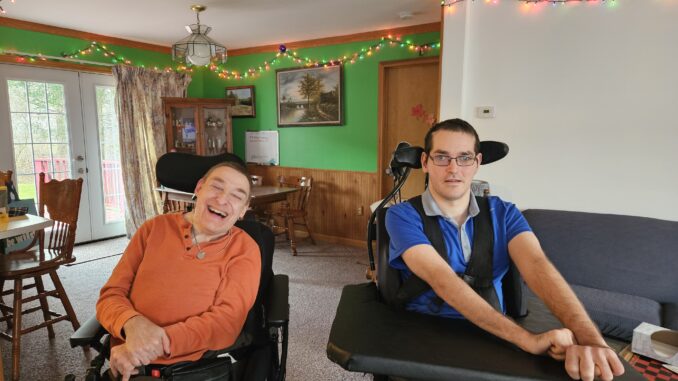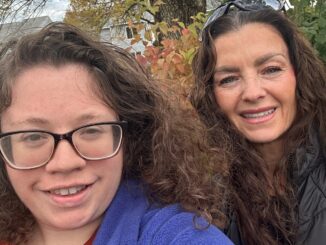
Housing Navigation supports home ownership for adults with developmental disabilities
by Gail Allyn Short
Like most young adults, Nick Mykytyn, 27, of Oneonta, N.Y., reached a point where he wanted to move out of his parents’ home and into his own place. But with cerebral palsy, Nick—who uses a wheelchair to get around—knew living on his own would require extra support.
“Nick has wanted to live on his own ever since his older brother moved out to go to college,” says his dad, Kirt Mykytyn.
Eventually, a neighbor across the street from the Mykytyns announced her intention to sell her house and move closer to her children. Excited at the prospect of finding a home that met Nick’s needs, the family expressed their interest in buying the one-story, 2,100-square-foot ranch style house.
“I have a lot more freedom now.”
Nick Mykytyn, Homeowner
Meanwhile, a family friend of the Mykytyns—John Thompson, 68, who also has cerebral palsy—asked if their son wanted a roommate if they bought the neighbor’s house. Thompson says the group home where he lived felt noisy and disruptive to him. The family agreed to Thompson’s house-sharing idea.
“So, before we decided to buy the house, we made sure that it was something we could possibly do because we were talking about having two wheelchairs in there,” the elder Mykytyn says.
The Mykytyns turned to Hank Lobb, a Master Housing Navigator at Springbrook, for help. Springbrook, located in Oneonta, is an agency that provides a range of support services to children and adults with developmental disabilities.
The agency is partnering with the New York State Council on Developmental Disabilities (CDD) and the New York Alliance for Inclusion and Innovation, organizations striving to give people with developmental disabilities the opportunity to gain greater independence by using a person-centered approach to explore and find independent housing.
Lobb is assisting people with developmental disabilities using the Alliance’s Housing Resource Center (HRC), an online repository of information to help find housing options and support.
“The HRC is a set of tools that we used to help navigate the different funding resources and service deliveries out there,” Lobb says.
Housing navigators also help clients determine where and how they want to live, their budget, whether to buy or rent, and which in-home care and home modifications they need to live safely in the home.
“Hank put me in touch with the people I needed to be in touch with to make sure this was truly something that was going to be feasible that I could get help modifying the house to suit them,” Kirt says.
For example, the family had to figure out how to get the wheelchairs up the steps to the house’s entrances. Kirt says he managed to build a ramp to the front door, and the State provided funds to install a vertical platform lift so his son and Thompson could get into the house from inside the garage.
State funding also paid for a tracking system in the two bedrooms that helps caregivers lift Mykytyn and Thompson in and out of bed and for a larger bathroom with room to maneuver a wheelchair. Additionally, the State also paid for virtual assistant technology to control lights by voice, and video and audio monitors to provide added security, Kirt says.
Furthermore, Lobb helped them find a live-in caregiver to assist Thompson and the younger Mykytyn at night.
In July 2022, Nick Mykytyn moved into his new home. Thompson joined him the following month.
“My wife Barb and I are right across the street, and I’m retired, so when they need something, one of us is almost always able to come over,” Kirt says.
Nick says, “I have a lot more freedom now.”
Thompson agrees, and says he enjoys being able to make his own schedule, a freedom he lacked at his former group home.
“Where I used to live, I had to go to the program five days a week. Now I go two or three days a week. I also have more outside activities that I can go to,” he says.
And Lobb sums up the best part of Mykytyn and Thompson’s new living arrangements this way: “It’s what they want.”
For more information about the New York State Council on Developmental Disabilities, go to https://cdd.ny.gov/. This program is supported by funding from the U.S. Department of Health and Human Services Administration for Community Living.



